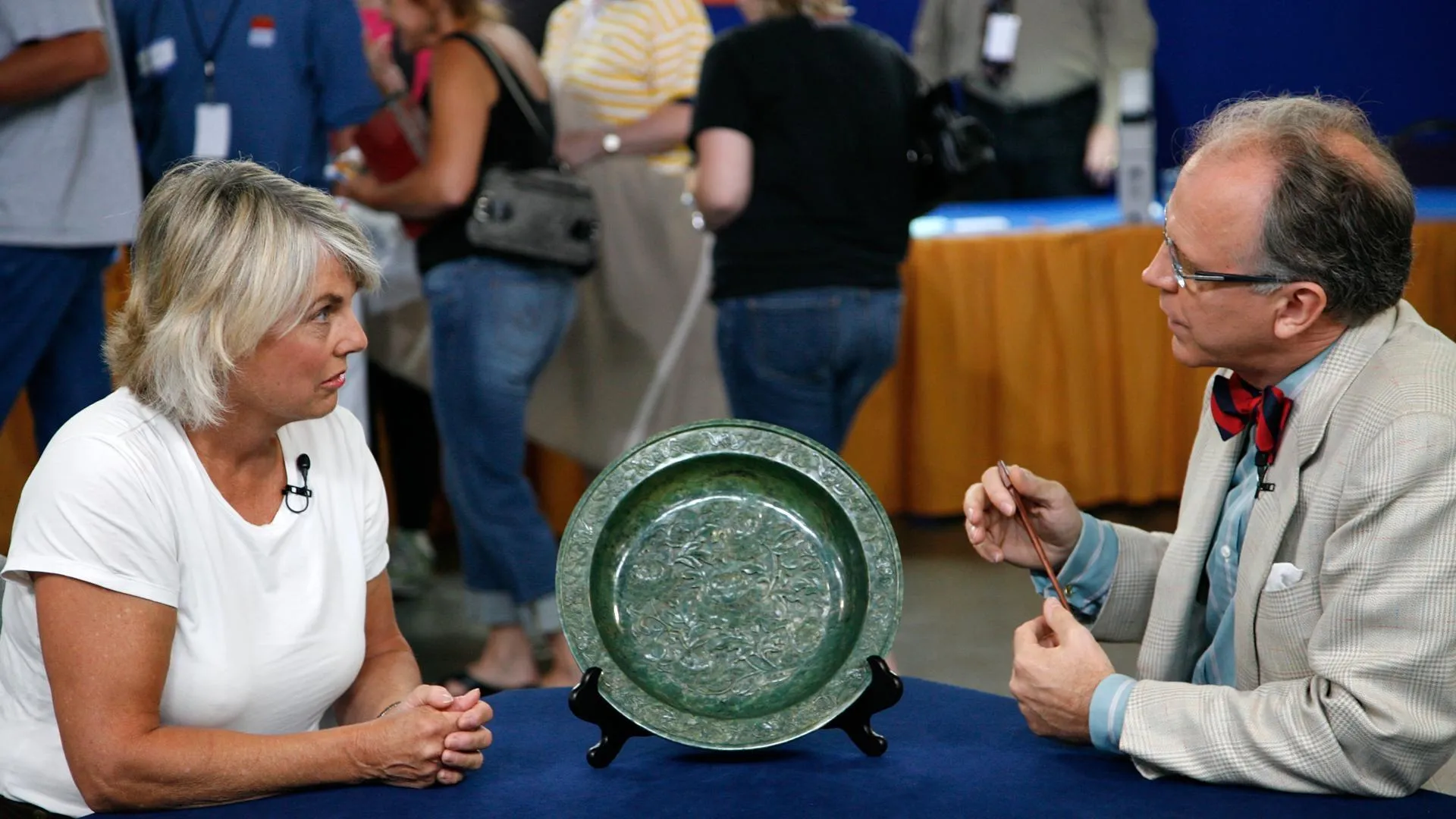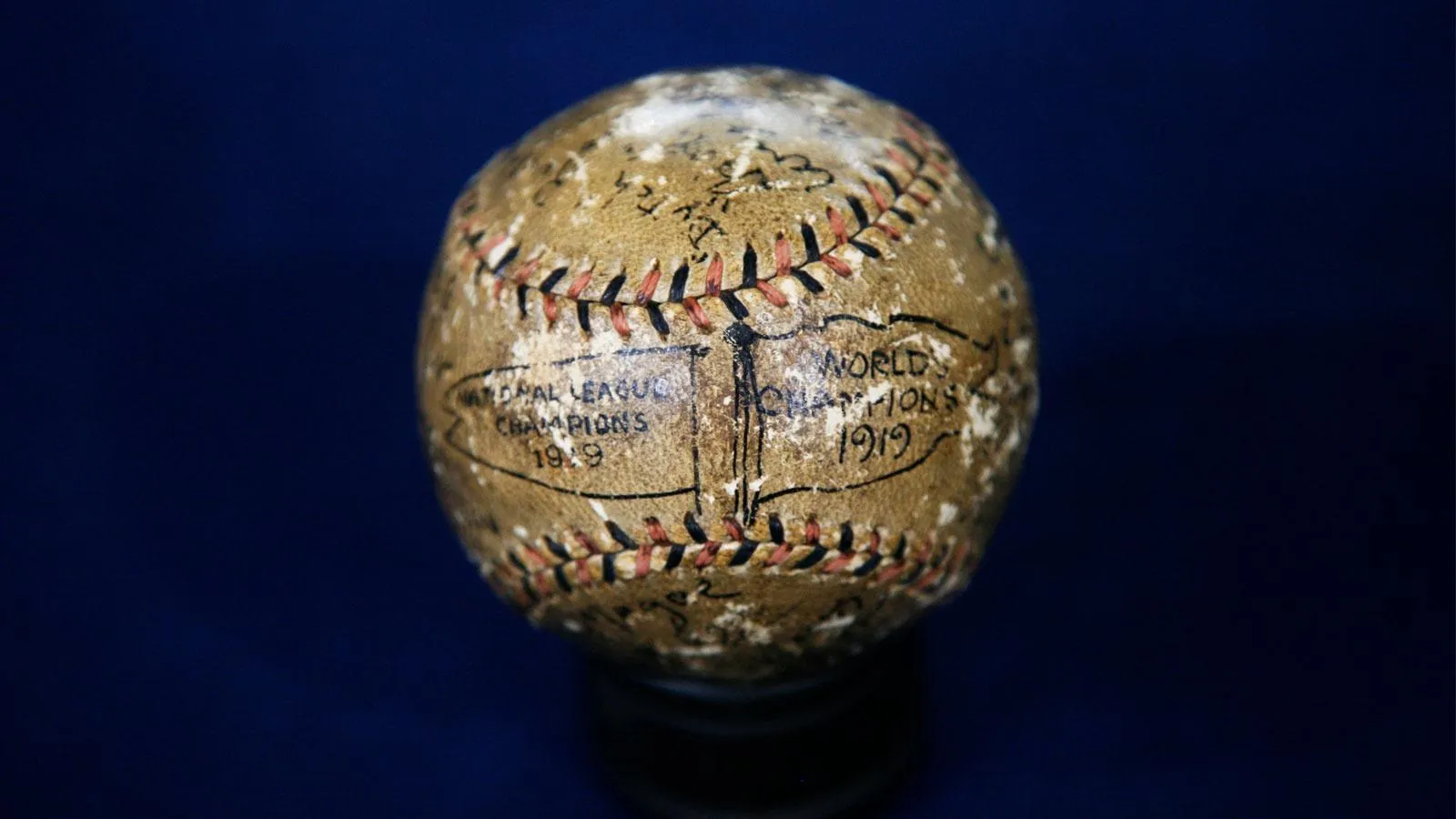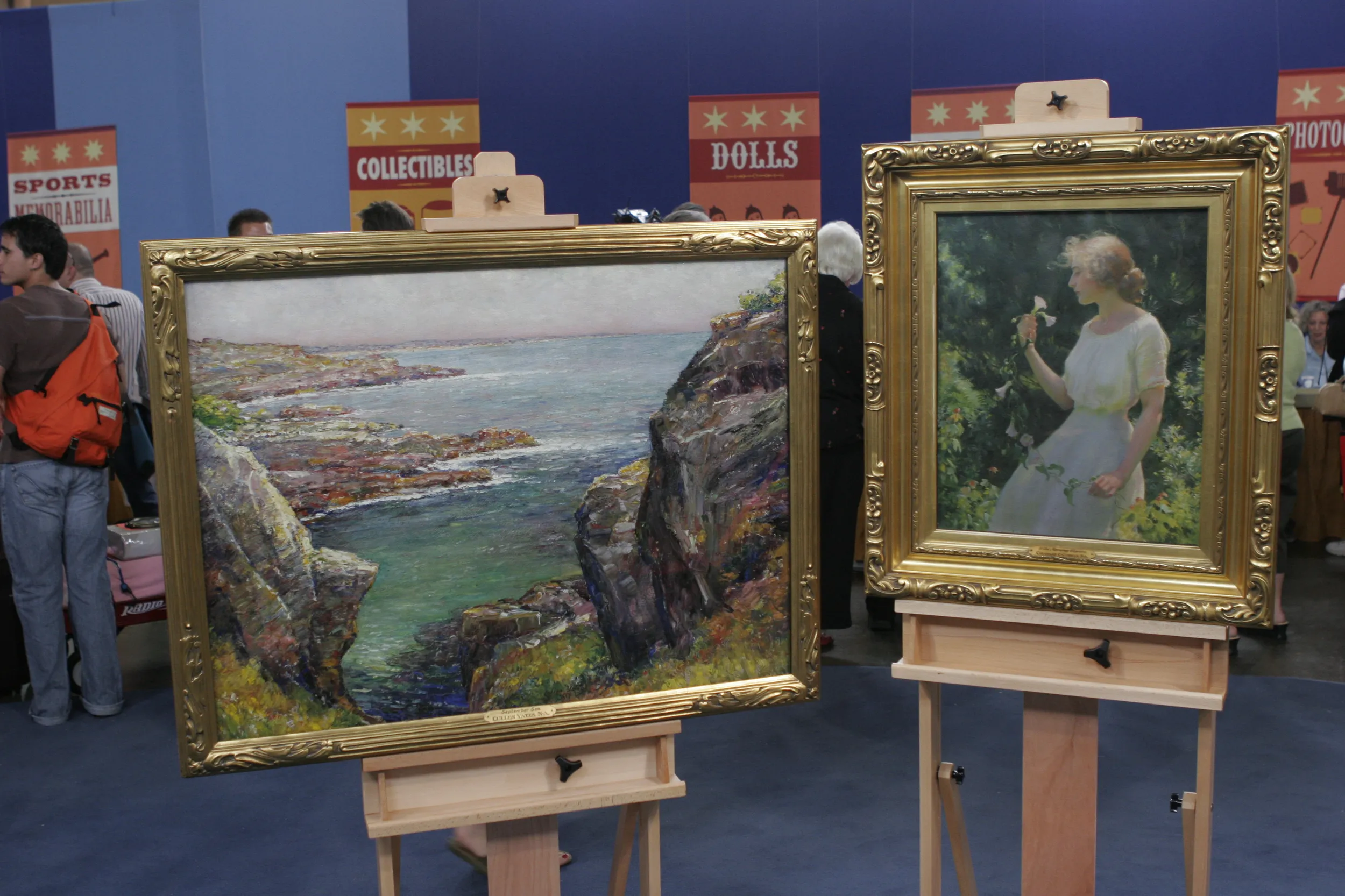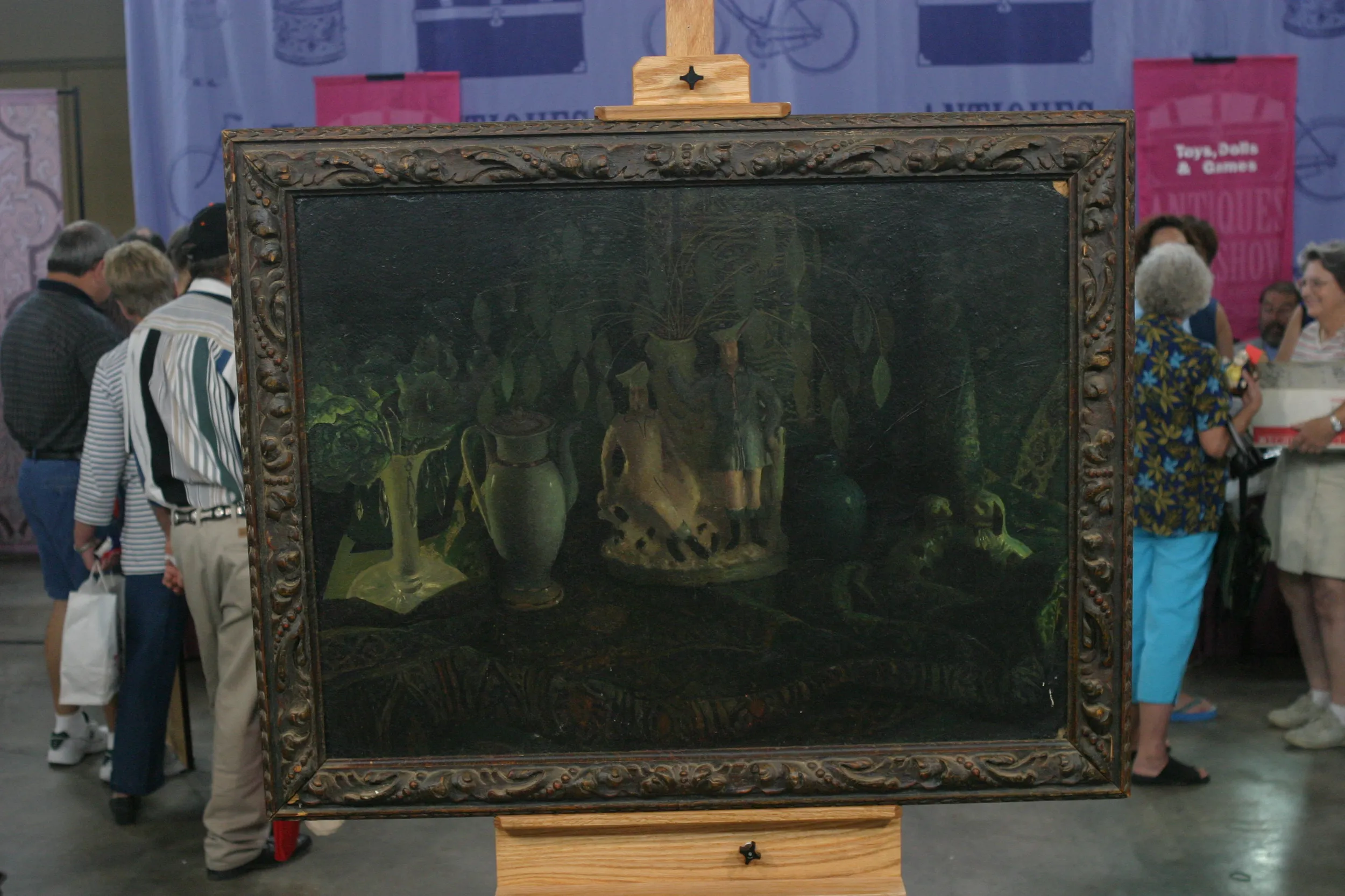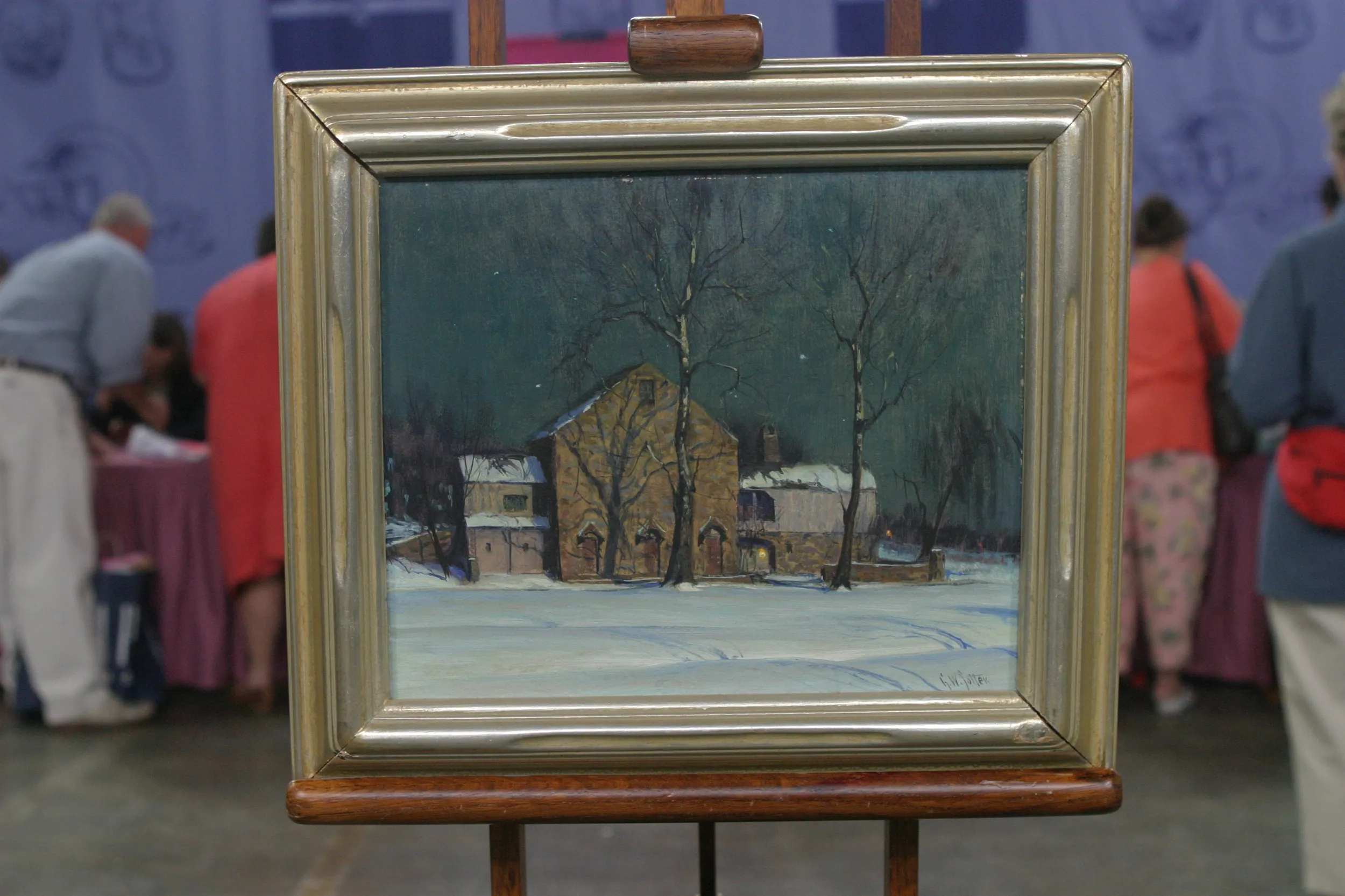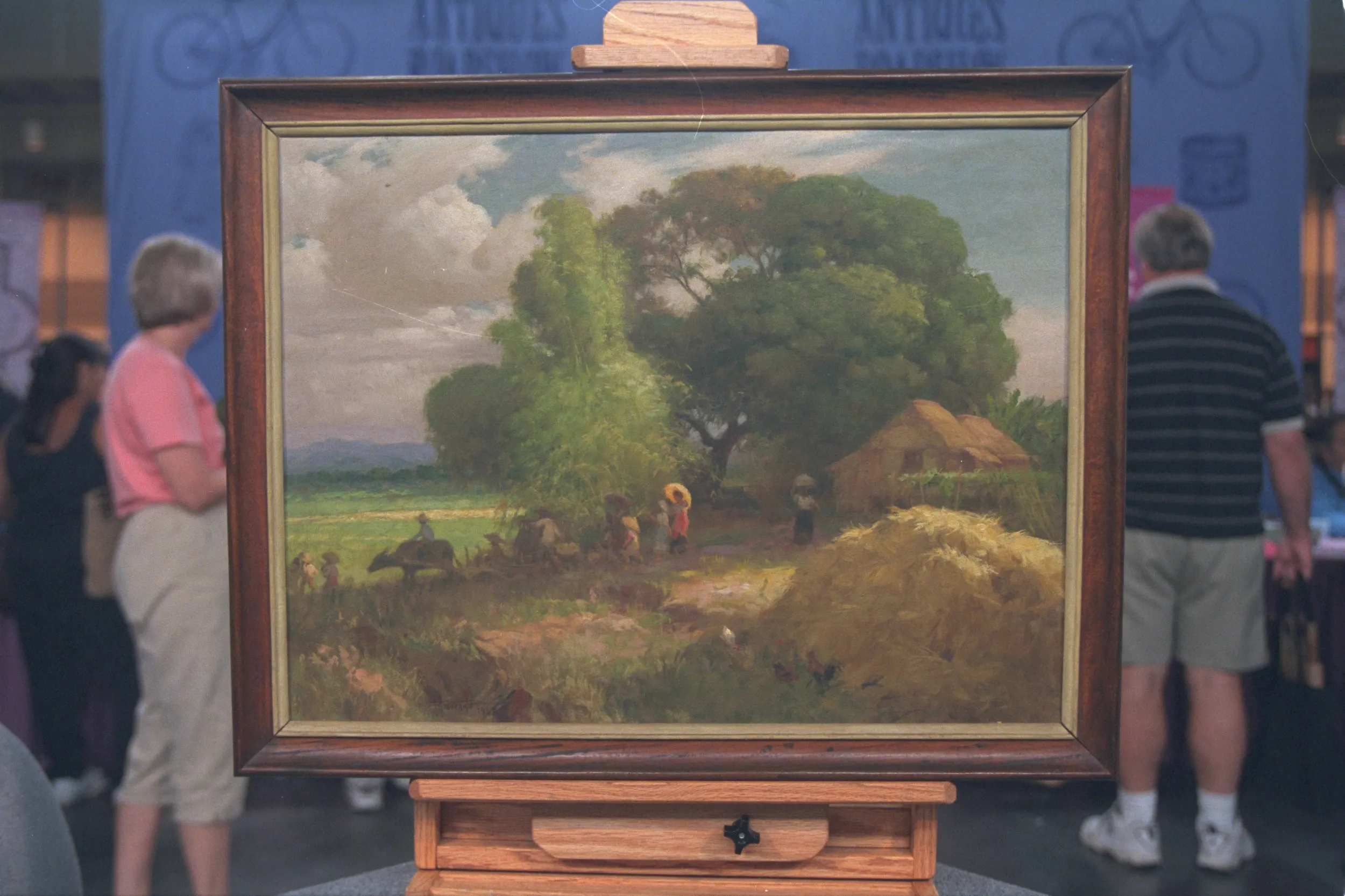GUEST: My husband is an artist, and his drawing professor was moving from Nebraska and gave us a selection of pieces, and when we got this from him, he said that Jimmy Ernst was doing a mural for a bank in Lincoln, Nebraska, where his professor had been working, and he bought it from Ernst at that time. So we've probably had it for around 30 years. And I've always been curious about it, and I thought this is a perfect opportunity to try to learn something about it other than the fact that it's a watercolor, or probably with gouache. I know it's opaque. And I know his father was Max Ernst, very renowned artist, but not... Don't know that much about Jimmy, so...
APPRAISER: Okay, well, yes, he is the son of Max Ernst, who was one of the most important Surrealist painters internationally. Jimmy was born in Cologne, Germany, and actually grew up there until he was about 18. His father had abandoned the family and he was raised primarily by his mother, who was an art historian. And he moved to the United States by himself. He did not have a great love for his father, and he really tried to steer against going into the art field. But when he came to New York, he got a job at MOMA through various connections of his family, and then he became Peggy Guggenheim's personal assistant.
GUEST: Oh, yeah?
APPRAISER: So he certainly made more connections there and was involved and influenced by a lot of different art. So at that time, he finally decided he wanted to become a painter, but he would do it in his own way. And they were often quite bizarre. What we have here, in your piece, is actually a little later piece from 1959.
GUEST: Mm-hmm.
APPRAISER: And this is very characteristic of the type of work that he was doing at that time, with the way the brushwork is done. And you're absolutely right that it is watercolor and gouache. The white areas are the gouache. You received this as a gift; do you know what the gentleman who bought it paid?
GUEST: On the back of the watercolor is the number 20 in pencil.
APPRAISER: Mm-hmm.
GUEST: And I assumed he probably paid $20 for it.
APPRAISER: Well, Jimmy Ernst is becoming a very hot artist right now, because there's a great deal of interest in decorative arts from the '50s. Many people are furnishing their homes with furniture and decorative arts from this period, and so they need paintings to go along with it. And this particular work, if it were in a gallery in New York, the value would be $5,000.
GUEST: That's nice!


